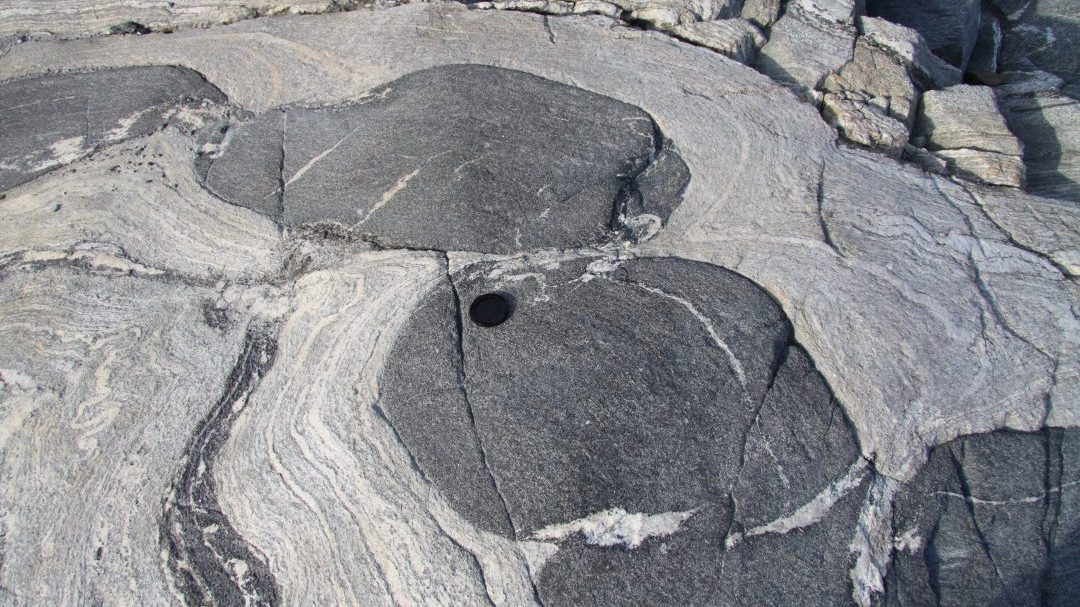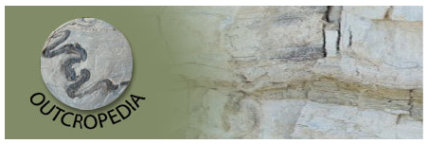Get Involved

What is an outcrop
Geologists study the structure and history of the Earth, and specifically its rocky interior. Although complex and expensive equipment is used for such studies, a lot of information about the history and composition of the Earths interior can simply be obtained by having a close look at rocks in mountains, along roadsides, and any other site at the Earth’s surface. If a rock mass is visible at the surface, a geologists will say that the rock mass “outcrops”. Isolated masses of rock are named “outcrops” by geologists. Most of these outcrops are made of single, homogenous kind of rock, such as granite, but in many cases rocks are layered or cleaved, or show more complicated patterns on their surface. At high temperature and pressure inside the earth, rocks can move slowly like honey flowing from a pot, or can break creating earthquakes. These data can be used to reconstruct what happenedin the history of the rock. The Outcropedia is a website meant to show a collection of such outcrops
Who owns the photographs of outcrops?
When you submit your own material to Outcropedia, such as text, photographs or drawings, you remain the owner of the copyright of this material. If you are uploading material where the copyright belongs to someone else, you should first ask permission from the owner to do so. We advice all Outcropedia users about this copyright, but cannot take responsibility or action if photographs are used without permission. Please be aware of this when you submit material. If you do not wish to see your photographs used elsewhere, limit their resolution or place a digital watermark in the photograph.
Can I download pictures of outcrops?
Copyright of photographs, drawings and text in Outcropedia remain with the owners, usually the person who submited the photograph. You should ask permission to the owner of any material, before using it in other context. Contact us to get in touch with the owner of your favorite outcrop photograph.
How can I cite this website?
You can cite this website as “Outcropedia”: www.outcropedia.org
Who can use Outcropedia?
Anybody can use Outcropedia but before you submit an outcrop you have to register. Registration is free.
Who can submit new outcrops?
Anybody who owns photographs of beautiful outcrops can enter material to Outcropedia, preferably with some geological explanation. We restrict entry to geologically interesting outcrops and we will remove unsuitable material such as entries where persons or advertisements are dominant.
How do I get a login username and password?
Please register before you upload outcrops to Outcropedia. All that is required for registration is your name and Email address. These data remain confidential. Upon submission of this basic information, you will automatically receive an email with your login data.
What are the file requirements for uploading a new outcrop?
Coordinates of your outcrop should be in latitude-longitude for WGS84 datum, and in the form of digital degrees. These are negative for the southern hemisphere and locations west of Greenwich. For example Paris would be entered as lat 48.85667, lon 2.350987; Buenos Aires as lat -34.608418, lon -58.373161 . Remember that 5 decimals are normally accurate enough for a place indication, since they represent metre-scale accuracy. If you dont’t have the information about the coordinates of the outcrop, you may simply fill in the coordinates by clicking the appropriate place on the Google map.
Text should be less than 250 words, and be preferably in english, but other languages using latin script are allowed.
Images could be photographs or in exceptional cases drawings. These must be in .jpg/.jpeg format. Please use resolution of 1080×608 pixels.
How to add an outcrop?
Just click on the button here below and start contributing. You will be asked to login or register and you will be redirected to the form for inserting a new ouctrop.
Complete all details in the form (name of the outcrop, description etc.) and upload the images of the outcrop in the “Gallery” tab.
For each image, please choose a category and insert a name and a caption. The caption should contain a very brief description and the reference to the author of the photo. E.g. “Slickenlines in Cenozoic conglomerates. Photo by Stefano Tavani“.
After you make sure all details are filled correctly, simply click “Submit for review”.
Please send a message to: rodolfo.carosi@unito.it to let us know of the pending submission
GeoTours
In this site you can add Geological Field Trips or Geo Tours. To propose a new GeoToru send text, photos and the itinerary to: R. Carosi: rodolfo.carosi@unito.it and S. Iaccarino: salvatore.iaccarino@unito.it
Geoethics and Outcropedia
Outcropedia is intended as a web platform where geoscientists and Earth sciences lovers can share picture (and location) of spectacular outcrops. In this way geological sites all around the world (and their pictures) are easily accessible, carrying numerous advantages, for instances in teaching activities and geosites promotion. On the contrary, the main disadvantage is that exposes the same sites to the risk of irresponsible sampling. So please, use your hammer only for scale.
However, in the case of indispensable sampling, following Druguet et al. 2013 (Episodes, 36, 11-18) we recommend to:
– Drill sampling is particularly threatening because it has a negative visual impact, whilst many times unnecessary. Before sampling, geologists should think about the question “is drill sampling really necessary for the study being carried on?”
– Do not take samples from the centre of a geological type locality or a site of especial scientific, didactic interest or aesthetical/photographic value. If an outcrop is spectacular enough that deserves being photographed, then you should not core or sample the rock face that has been recorded.
– Sample other parts of the same or a neighbouring outcrop where there is less impact. Core samples must be discrete in location; take cores from the least exposed faces and try to plug the holes using the outer end of the core, if possible.
– Before sampling ask experts and authorities (e.g. Natural Reserve or National Park managers if the area is protected) for advise and permission.
Enjoy the outcrops and do not destroy them!
